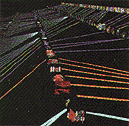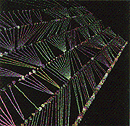Architecture today consists of a complex process, a complex product, and a complex life cycle. In all phases, the computer is involved. In planning and designing, the machine helps to document. organize, and store information, to visualize design alternatives and to produce working drawings or models for the construction workers. The completed building - the product - is increasingly equipped with sensors. controllers, monitors and computers of all kinds. Once the building is in use, the computer is needed to support maintenance, calculate energy consumption and rent. monitor security and finally keep track of building parts for possible re-use.
This book will focus on the design of architecture and on the growing role of thc computer in this process. There is a long and successful tradition of architects making use of new technology throughout the centuries. The advent of computers now offers design, construction. and management support that is by orders of magnitude better than all instruments before, hut it also requires more complex knowledge. This hook will give some insight into this new world" (Schmitt 1999,S.5).

[Abb.8]

[Abb.9]
International Association for Bridge and Structural Engineering (IABSE):
http://www.iabse.ethz.ch/default.html
Swiss Computer Graphics Association:
http://www.scga.ch
Virtual Museums
Virtual Palladio Museum:
http://andrea.gsd.harvard.edu
Virtual chair museum:
http://caad.arch.ethz.ch/teaching/nds/schreg/
Virtual .Architectural library:
http://www.clr.toronto.edu:1080/VIRTUALLIB/arch.html
The World Virtual University:
http://www.ccon.org/theu/index.html
Building Sites with cameras
Berlin Potsdamer Platz und Spreebogen:
http://www.cityscope.de
Chemiegebäude ETH Hönggerberg:
http://caad.arch.ethz.ch/projects/hci/Tracker/
(...)